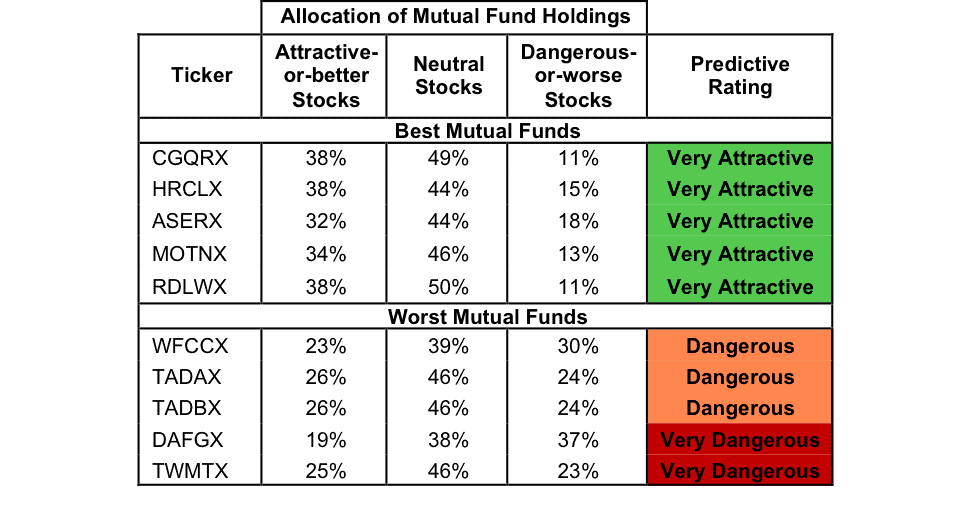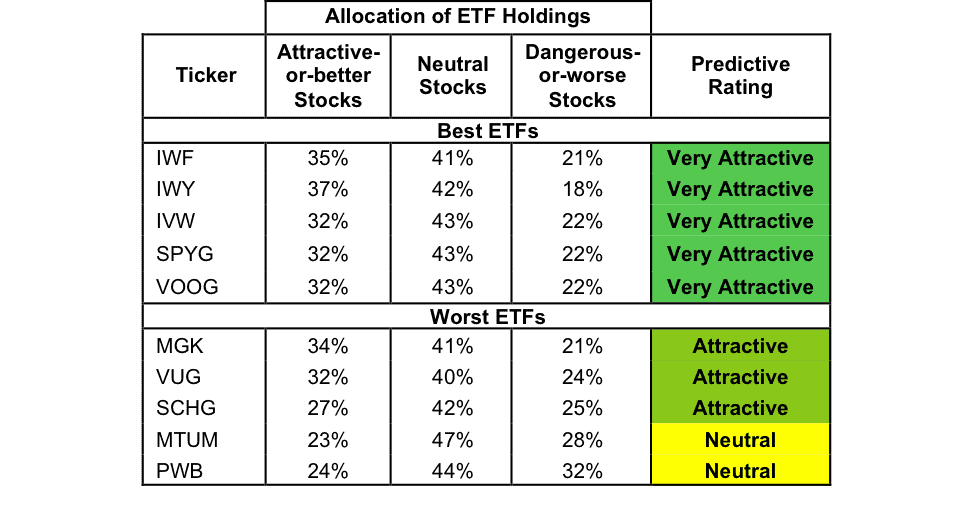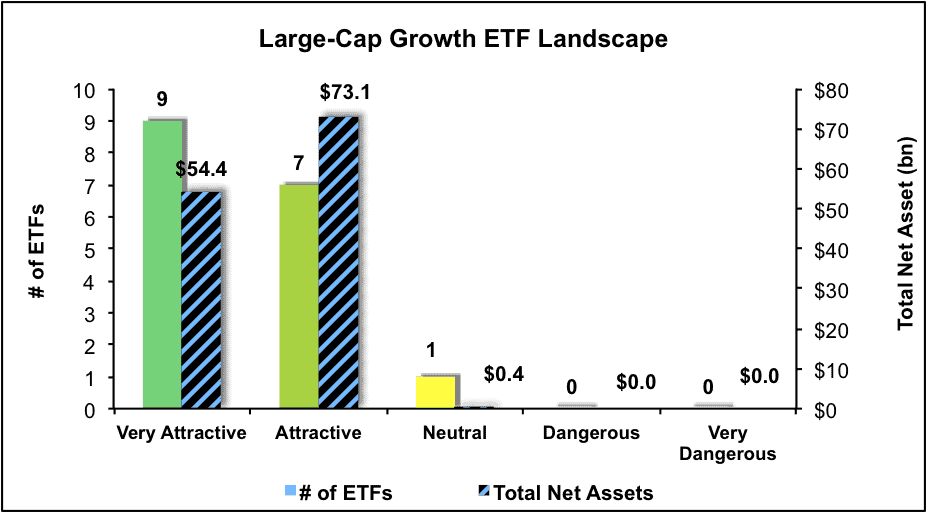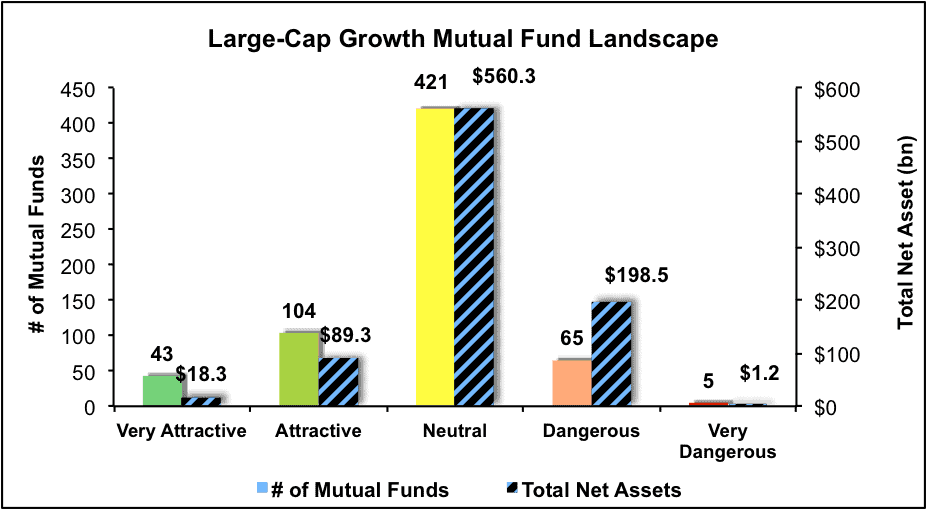The Large Cap Growth style ranks fifth out of the twelve fund styles as detailed in our 1Q17 Style Ratings for ETFs and Mutual Funds report. Last quarter, the Large Cap Growth style ranked fourth. It gets our Neutral rating, which is based on an aggregation of ratings of 17 ETFs and 638 mutual funds in the Large Cap Growth style as of January 31, 2017. See a recap of our 4Q16 Style Ratings here.
Figures 1 and 2 show the five best and worst rated ETFs and mutual funds in the style. Not all Large Cap Growth style ETFs and mutual funds are created the same. The number of holdings varies widely (from 20 to 1,161). This variation creates drastically different investment implications and, therefore, ratings.
Investors seeking exposure to the Large Cap Growth style should buy one of the Attractive-or-better rated ETFs or mutual funds from Figures 1 and 2.
Here is our ETF and mutual fund rating methodology, which leverages our rigorous analysis of each fund’s holdings. We think advisors and investors focused on prudent investment decisions should include analysis of fund holdings in their research process for ETFs and mutual funds.
Figure 1: ETFs with the Best & Worst Ratings – Top 5
* Best ETFs exclude ETFs with TNAs less than $100 million for inadequate liquidity.
Sources: New Constructs, LLC and company filings
Figure 2: Mutual Funds with the Best & Worst Ratings – Top 5

Sources: New Constructs, LLC and company filings
iShares Russell 1000 Growth ETF (IWF) is the top-rated Large Cap Growth ETF and Columbia Disciplined Growth Fund (CGQRX) is the top-rated Large Cap Growth mutual fund. Both earn a Very Attractive rating.
PowerShares Dynamic Large Cap Growth Portfolio (PWB) is the worst rated Large Cap Growth ETF and Transamerican U.S. Growth (TWMTX) is the worst rated Large Cap Growth mutual fund. PWB earns a Neutral rating and TWMTX earns a Very Dangerous rating.
The Danger Within
Buying a fund without analyzing its holdings is like buying a stock without analyzing its business and finances. Put another way, research on fund holdings is necessary due diligence because a fund’s performance is only as good as its holdings’ performance. Don’t just take our word for it, see what Barron’s says on this matter.
PERFORMANCE OF HOLDINGs = PERFORMANCE OF FUND
Figures 3 and 4 show the rating landscape of all Large Cap Growth ETFs and mutual funds.
Figure 3: Separating the Best ETFs From the Worst Funds
Sources: New Constructs, LLC and company filings
Figure 4: Separating the Best Mutual Funds From the Worst Funds
Sources: New Constructs, LLC and company filings
This article originally published here on February 1, 2017.
Disclosure: David Trainer, Kyle Guske II, and Kyle Martone receive no compensation to write about any specific stock, style, or theme.


